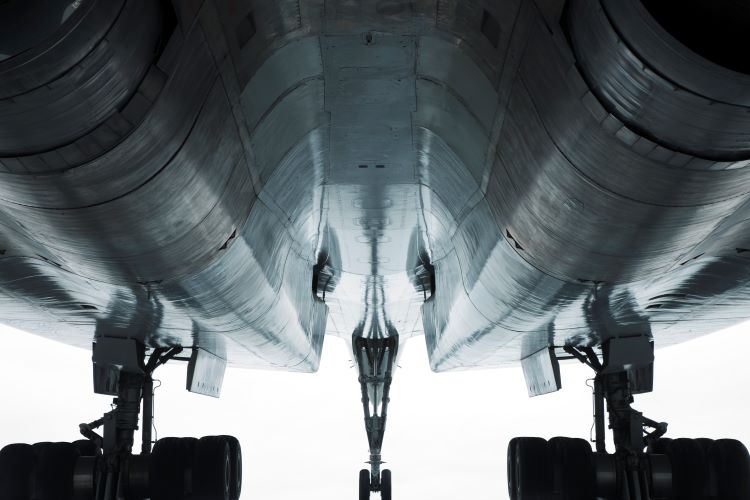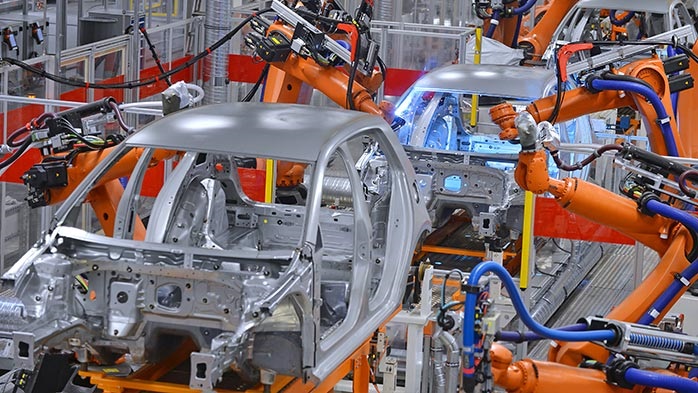Circular Economy Models

June 16, 2025
The afterlife of aerospace aluminum: Constellium and TARMAC’s flight path to circularity
Written by Nicholas Bell
Aluminum recycling in aerospace has long been an uphill battle. Even though aircraft are full of high-value aluminum, most of it never finds its way back into high-performance aerospace alloys as scrap. Instead, it’s “downcycled” – melted into automotive castings, industrial products, or ends up as DeOx for steel consumption.
But a new partnership involving Constellium and TARMAC Aerosave is trying to break that pattern, and it might have the right mix of players to do it.
Scrap sovereignty
The project seeks to prove that aerospace aluminum can achieve true circularity, a goal that’s long been more theory than reality.
Constellium’s role in this development stands on its own. They produce aerospace alloys domestically at their Ravenswood, West Virginia, site; and their Muscle Shoals, Alabama, facility is close to Airbus’ assembly facility in Mobile.
With Airbus and Safran as major stakeholders in TARMAC Aerosave, the largest end-of-life aircraft recyclers in Europe, and with all three companies – Airbus, Safran, and Constellium – headquartered in France, the effort carries distinctly European overtones.
Airbus’ US footprint is limited compared to Boeing’s, and Boeing’s scrap stream has accounted for most aerospace scrap inflows across the country between the two manufacturers. While Safran does have operations in the US, they’re largely tied to the defense sector, a relatively small slice of the overall aerospace scrap stream. Its commercial work with Boeing primarily flows through CFM International, its joint venture with GE Aerospace, a competitor it’s unlikely to share technical breakthroughs with.
So, while the technological goal is circularity, this may just as much mark the beginning of regional scrap differentiation, where European players move to secure their own closed-loop ecosystems ahead of their US peers – either purposely or simply by the happy accident of where business is conducted.
Lessons from titanium
The other major non-ferrous metal used in aerospace is titanium. If aluminum represents the largest share by weight, titanium is the second largest and has a greater number of uses. But in many ways its current scrap market structure is the antithesis of aluminum’s: Aerospace is king and accounts for most scrap generation; and a closed-loop system has long been embedded in the market.
Recyclers take highly segregated aerospace scrap, collected under incredibly stringent controls, that can be remelted for reuse in the same application.
The reason for this established value chain is twofold:
1. Most of the scrap comes from the aerospace sector to begin with, in the form of 6-4 alloy (6% aluminum, 4% vanadium, the remainder being titanium), as its use in other industries, like automotive steelmaking, is added as an alloying element that can’t be recovered, unlike aluminum’s plethora of scrap-generating sectors.
2. The pure titanium metal supply is limited, with only a handful of sellers, most of which are concentrated in a single region (that region not being North America as commercial titanium sponge is no longer produced in the US). This makes high-quality scrap a necessary substitute – often making up a larger share of the melt mix than most aluminum producers could sustain, surpassing or at least sitting at the upper end of scrap utilization rates across the non-ferrous industry.
One thing anyone that’s bought/sold/tracked titanium scrap knows (oddly, enough across AMU and SMU, there’s a couple of us), it’s an incredibly specialized and competitive market. Titanium scrap recyclers tend to be just that: titanium scrap recyclers. They rarely venture into other metals. When they do, it’s often even more niche. Because of this high degree of specialization, they also live and die with the aerospace market.
Too much of a good thing
Another structural caveat to this push for aluminum circularity is the “buy-to-fly” ratio. That’s the amount of material purchased versus what ends up in the final aircraft part. In aerospace, this ratio often exceeds 10:1, meaning for every finished part, nearly 10 times that amount was generated as scrap. While that sounds like a scrap goldmine, it creates a paradox: The more parts produced, the more upstream scrap is generated, which theoretically increases the supply exponentially.
Unless the buy-to-fly ratio significantly improves, this structure risks diminishing returns, making it difficult to recapture investment in the technical demands for cleaning, sorting, and certifying scrap for consumption.
For outside recyclers looking to insert themselves into aerospace’s closed-loop supply chains, this structural challenge alone creates high barriers to entry. It will likely be a tightly controlled market with the big generators and players internalizing their scrap streams.
Where aerospace aluminum ends up
Most people would be shocked at how little of an end-of-life aircrafts content ends up back at scrap yards. A lot of aircrafts sit in what the industry terms “graveyards”. Sometimes, they’re picked for aftermarket parts to sell or use in maintenance, repair, and overhaul (MRO) services.
Sometimes there’s too much metal embedded into each other to separate the sum into its parts is just not economical. This is something the sector shares with wind-turbine recycling, for instance.
Currently, a lot of that scrap ends up being purchased by secondary alloy and DeOx producers. Surface area, age, coatings, and oil/moisture exposure, especially in regard to turnings, all degrade its ability to meet aerospace melt specifications.
Except in the case of making aluminum DeOx for steel, most aerospace grades of aluminum scrap are used as blending agents to balance out compositions in melt mixes. They’ll get added to secondary alloy melt mixes with more variability in strength requirements in certain automotive applications or for industrial end-uses destined for sand or die-casters.
Innovation breeds innovation (even if ownership defines the loop)
If successful, the model could change how the industry views end-of-life aircraft, not as salvage, but as stockpiles. And it could give Constellium, Airbus, and their partners an edge in sustainability-driven procurement environments if they close the loop where Scope 3 emissions are under growing scrutiny.
None of this should detract from what is, at its core, an exciting development for the aluminum industry and a meaningful step toward tackling one of its more complex sustainability challenges.
At the end of the day, innovation tends to trigger further innovation, and efforts like this often pave the way. Still, it’s important to view this within the structural realities of aerospace recycling. Technical hurdles aside, long-term impact will depend just as much on who controls scrap flows, remelt infrastructure, and the regulatory channels that make true circularity possible.








